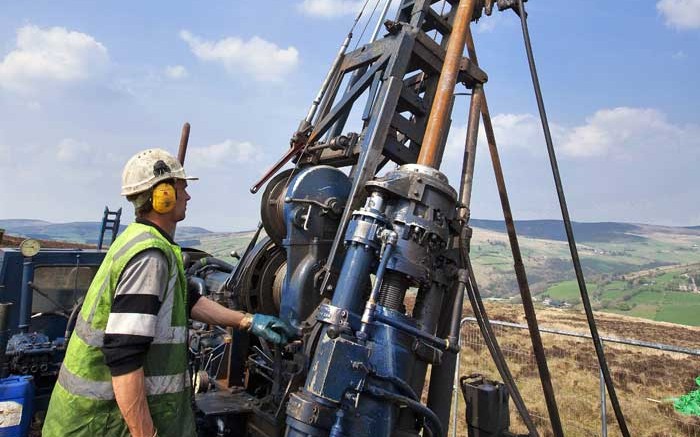VANCOUVER — According to CEO Patrick Anderson, explorer Dalradian Resources (TSX: DNA) has developed a “superior geological model” at its Curraghinalt lode-gold deposit 127 km west of Belfast, Northern Ireland, that is helping the company target ounces with greater efficiency.
And it appears Dalradian is on the right track, based on an April 16 resource estimate that boosts measured and indicated and inferred resources by 114% and 12%.
It’s the first resource update at Curraghinalt since November 2011. The original resource model underpinned last year’s preliminary economic assessment (PEA) that calculated a 33.4% after-tax internal rate of return and US$331-million net present value assuming a five-year trailing gold price is US$1,166 per oz. The proposed mine would carry US$192 million in development costs.
Over the intervening period the company has carried out 29,000 metres of drilling and completed what it labels a “complete re-interpretation of [Curraghinalt’s] vein zones.” The deposit is classified as a lode-gold system with steeply dipping and structurally controlled high-grade, gold-bearing quartz–carbonate veins. Curraghinalt is open in all directions.
Dalradian’s update upgrades Curraghinalt’s measured and indicated resources to 3 million tonnes grading 10.41 grams gold per tonne for 1 million contained oz., while inferred resources total 8 million tonnes averaging 9.67 grams gold for 2.5 million contained oz. Twelve vein zones were modelled and assay data were composited to 1 metre downhole. All resources assume a cut-off grade of 5 grams gold.
The company has also used wider resource envelopes, which should equal less dilution in upcoming mine plans. However, the adjustment resulted in a 20% and 24% drop in measured and indicated and inferred resource grades. The average horizontal width of the updated resource is 2.57 metres, while the minimum horizontal stope width contemplated in the PEA was 1.8 metres, with an 8.1-gram-gold head grade.
Meanwhile, Dalradian remains on schedule to break ground on a bulk-sampling campaign at Curraghinalt during the second quarter.
In late January the company received full approval from the Strategic Planning Division of the Northern Ireland Department of Environment for a 2,000-metre underground development aimed at confirming its metallurgical testing and grade assumptions.
It took less than a year for the company to secure its permits. The program is expected to cost US$30 million, and take up to 20 months to complete.
Alternative metallurgical work at Curraghinalt has also returned promising results, as Dalradian has investigated using a sequential gravity-flotation circuit. Overall gold recoveries have been 99.4%, with 29.4% of the gold reporting to the gravity circuit, and 70% reporting to a bulk concentrate.
Gold from the gravity concentrate could be processed on-site to produce a saleable doré metal bar, while the flotation concentrate could either be cyanide leached at site or sold to a smelter. The company reports the process demonstrates “a potential alternative method, with higher overall recoveries, compared to the whole-ore cyanidation process used as the [PEA] scenario.”
In February Dalradian closed a bought-deal financing that should see it in a strong position to fund work. The company raised $14 million when it placed 20 million units at 70¢ per unit. Dalradian finished 2013 with a US$6.8-million net working capital position.
Dalradian shares advanced 11¢ on 1.2 million shares traded after news of Curraghinalt’s resource update, and closed at 85¢ at press time. Shares have traded within a 52-week range of 48¢ and 94¢, and there are 109.4 million shares outstanding for a $93-million market capitalization.


Be the first to comment on "Dalradian boosts Curraghinalt in Northern Ireland"